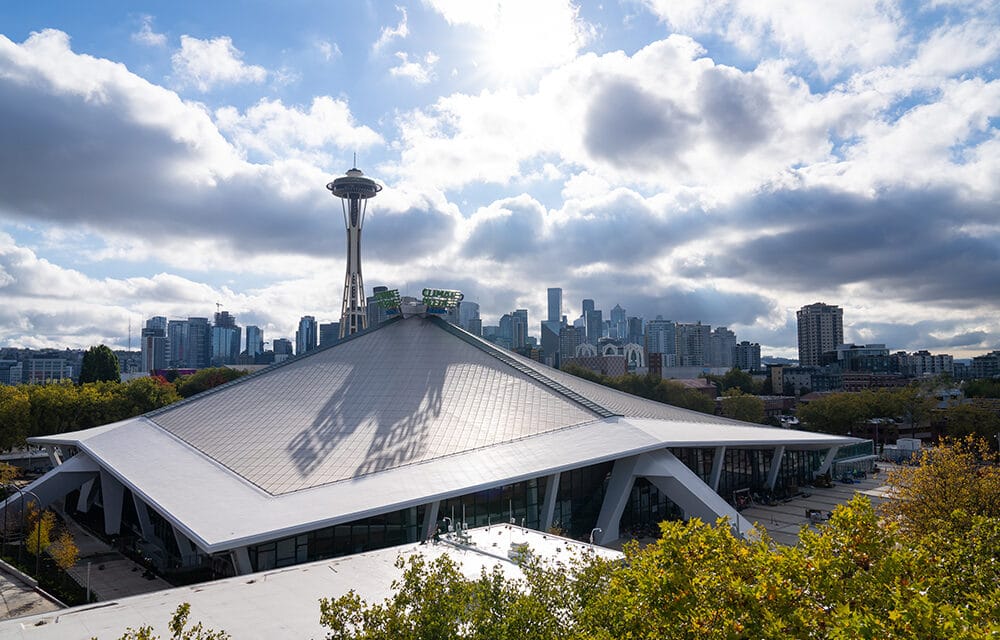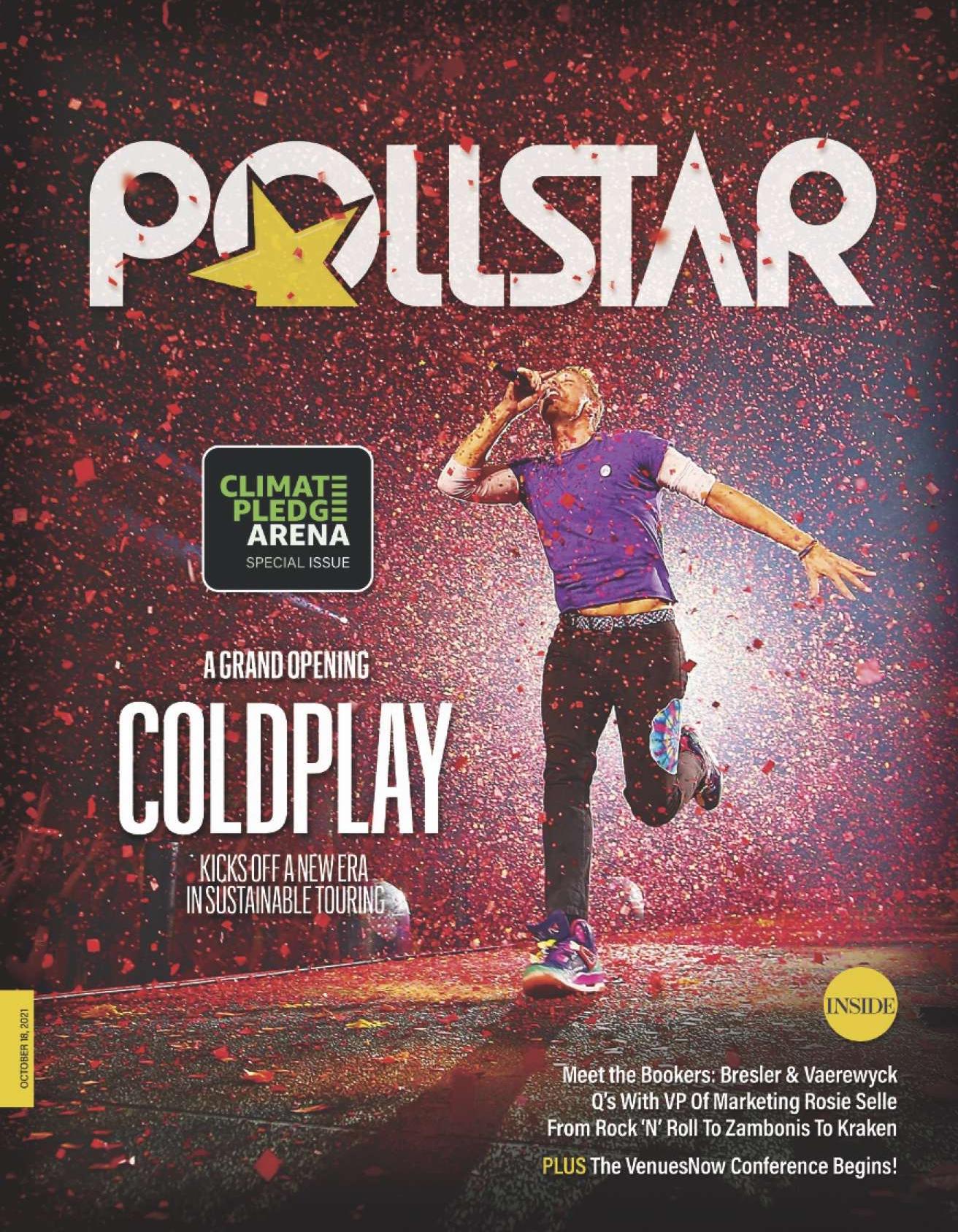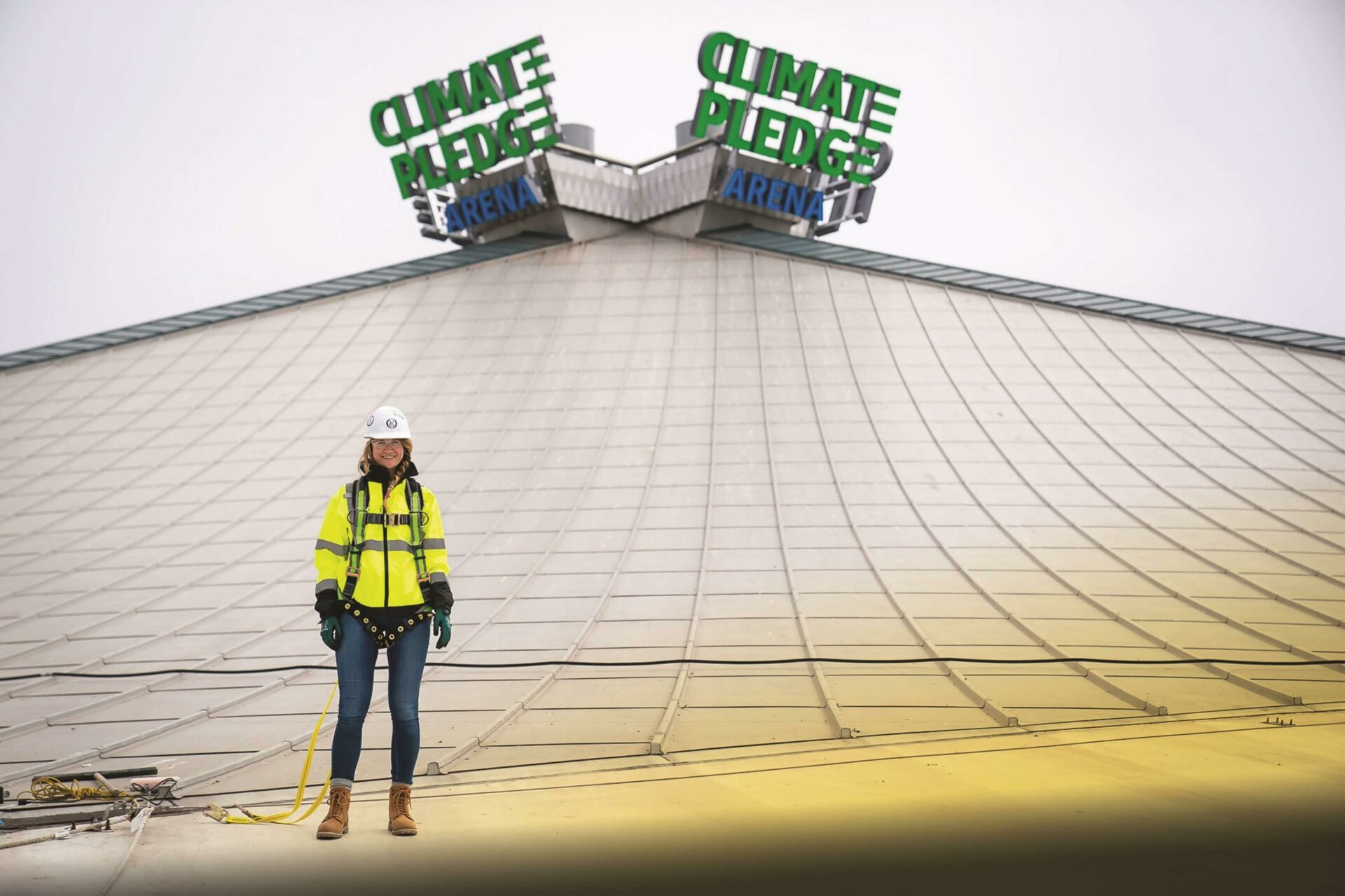RETRO ROOF: Climate Pledge Arena, the first projected carbon-neutral venue, sits under the original roof in Seattle. (Chris Mast)
To tackle ‘the challenge of our lifetime,’ Tim Leiweke delivered a new arena in Seattle, dedicated in name and design to sustainability, but also to the fan experience
Tim Leiweke picked a daunting project to cement Oak View Group’s reputation as an arena developer, but given the cutting-edge aspects of Climate Pledge Arena and all that it stands for as the future of sustainable venues, it’s been worth it for the company’s co-founder and CEO.
From designing what is planned as the first certified carbon-neutral sports facility — a commitment that required planning across nearly every part of the project, including construction (Page 60), transportation (Page 64) and food (Page 68) — and building it under an existing roof during the worst pandemic in 100 years to setting a new standard for revenue generation tied to one of the richest naming-rights deals for an NHL arena, it’s been quite a ride for OVG over the past five years in Seattle. (OVG also owns VenuesNow.)
It was all done with private money for a project that ballooned to more than $1 billion because of the complexity of the development and OVG’s desire to upgrade the building with new design features such as the dual videoboards and grab-and-go concessions with no belly-up stands.
“It’s the first project our company went after and the biggest risk I’ve taken in my career,” Leiweke said.
Leiweke ran AEG for 17 years and Maple Leaf Sports and Entertainment for more than two years before forming Oak View Group with co-founder Irving Azoff in 2015.
“Throughout much of the process, we didn’t have an anchor tenant and we were doing all this on the belief that we could ultimately get to the right place and try to re-create the industry,” Leiweke said. “It’s not based on ego where everybody else is dumb and we’re smart. It’s about how to use this opportunity to think outside the box on a lot of different levels.”
The anchor tenant became a reality in December 2018 when the NHL officially announced Seattle had secured the league’s 32nd franchise, which would be named the Kraken after the sea monster of Scandinavian folklore.
Ten months earlier, OVG and the city proved there was demand for big league hockey when Seattle sports fans put down an overwhelming 32,000 deposits for season tickets.
“They all stepped up to the blue line, so to speak, which put the wind in the sails of the franchise,” said Bill Chapin, senior vice president of sales and service for the team and the arena.
OVG picks up the tab on arena development, but the city is its partner in the vision for redeveloping the 74-acre Seattle Center campus in one of the country’s fastest-growing markets and a technology hub for two of the world’s biggest brands, Amazon and Microsoft.
The taxes generated from Climate Pledge Arena revenue streams ultimately boost the city’s coffers, Leiweke said.
Seattle Center’s performance venues, museums and the iconic Space Needle, built for the 1962 World’s Fair, drew 12 million visitors annually before the pandemic. OVG projects the arena itself, between sports, concerts and family shows, will attract 2 million people every year.
“We’re partners with the city on the campus,” Leiweke said. “If we all do better, not only does their revenue pie grow, but we grow as well and it goes back into the economics of the building, to create additional revenue streams that help us with the privatization of the arena.”
Climate Pledge Arena is essentially new except for the roof, which is protected as a historic landmark.
Capacity is a shade over 17,000 for both hockey and end-stage concerts.
The original Washington State Pavilion was a basic design at the time it opened as part of the World’s Fair showcase, said Chris Carver, a senior principal with Populous, the project architect.
In the early 1990s, Populous, then known as HOK Sport, along with just about every other sports design firm, looked at what could be done to renovate the arena to further accommodate the NBA’s old Seattle SuperSonics.
In 1995, the venue underwent a $95 million expansion designed by NBBJ that added 3,000 seats, and it was rebranded as KeyArena. But at about 400,000 square feet, it remained a tiny footprint compared with newer arenas.
The Sonics played there until moving to Oklahoma City in 2008 after they couldn’t get a deal done to build a new arena in Seattle. The WNBA Seattle Storm became a KeyArena tenant in 2000. The team joins the Kraken next summer at Climate Pledge Arena.
“Going into today’s world and trying to attract an NHL franchise, we knew that the approach that was taken last time on the renovation wasn’t going to work,” Carver said.
The challenge was redeveloping what originally functioned as a convention center into what ultimately turned into a 705,000-square-foot arena, plus the 159,000-square-foot underground parking garage and truck ramp, and keep it all contained under the original roof.
“The reason people love this building is it fits into the neighborhood so well,” Carver said. “The roof edges are low; it’s not like a 125-foot-tall arena that you see these days. All of the good things that it had were the challenges that we had to make this thing fit.”
After multiple geometry lessons to figure out how to make it all work, the solution was to excavate 60 feet below grade to build a new arena under the existing roof. Patrons enter at the upper concourse and go down from there to reach the two concourses and premium levels.
“OVG is going to spend a billion dollars on this project and when you (walk) up to it, you’re not going to notice anything different, except on the south end where we added an atrium entry because we had to find space to get people into the building,” Carver said. “It was really the back end of the arena, the service end, where all the trucks came in through a steep ramp. We turned it into the front door and brought the building back to street level.”
Back of house is a key piece of the project for OVG as it markets Climate Pledge Arena as a must-play for touring acts. Concert promoter Live Nation helped design the artist compound, starting with the blueprint for building eight loading docks to fit 16 trucks at service level.
At the old arena, there were just two loading docks situated at a level above the typical load-in space in the bowels of the building. As a result, all equipment had to be piled into freight elevators and transported down to event level, which was time consuming and inefficient, Leiweke said.
Leiweke said it became an expensive commitment to fit 16 semis in the garage, but it was important for OVG to be in the mix for major tours.
“It wasn’t about the market size but the size of the old facility that didn’t allow 40 to 60 trucks to come in with two-way access that we now have,” Chapin said.
The compound extends to artist amenities on the scale of a Four Seasons hotel, with private offices, showers, dressing rooms, a lounge and the Amazon Recording Studio, where acts can record new music, stream it to their website, talk to their fans or just hang out, Leiweke said.
It’s the second recording studio at an arena following Golden 1 Center, home of the NBA Sacramento Kings.
In Seattle, not to be outdone, Starbucks has a coffee shop backstage at the arena for artists and production crews.
The compound was designed apart from the rest of the service level. For the artists, it’s a short walk to the stage directly from the four dedicated star dressing rooms that headliners don’t share with other crew members.
Concert industry professionals walking the construction site told OVG that creating the nonshared space is a groundbreaking feature, said Eric Bresler, Climate Pledge Arena’s senior vice president of programming.
As more arena tours hit the road this fall, OVG officials are preparing for a bubble format to protect touring productions during the pandemic as they move from one city to the next, said Don Graham, the arena’s senior vice president of events and assistant general manager.
“Harry Styles will never have to put his crew in harm’s way here,” Leiweke said. “We felt the artists deserved their own spaces, and as it turns out (with COVID-19), it was important from a health and safety standpoint as well.”
The seating bowl is tight by default, the result of having to fit the new development within the original square box design aligning with the vintage roof.
Carver said it involved the concept of “short geometry,” where the ends of the arena were pushed in 15 feet from where they would be in a standard hockey dasher board concept.
The layout translates to fewer rows of seats in the corners and steeper inclines toward the ends, which made it conducive to developing an innovative videoboard design with triangle-shaped structures hanging over both goals.
“What that effectively gives you are these really intimate spaces on the ends,” he said. “Rather than get into the scoreboard wars that seem to be going on these days, we thought a unique approach would be to make the boards a little bit smaller and bring them closer to the audience.”
To do that, the idea was to effectively “split” the traditional center-hung videoboard into two components, Carver said.
The flat end of the triangle-shaped boards face the seats in the end zones, where most of the action occurs in hockey. The other two sides of each board are angled toward fans sitting near center ice.
Geoff Cheong, a principal with Populous, came up with the dual videoboard concept, a signature arena piece.
“It was kind of a wild idea and Mr. Leiweke loves wild ideas, especially when you can rationalize them,” Carver said. “It’s something totally different that’s never been done before.”
The roof is old but the rigging system is new, with a few hundred sound baffles attached to the ceiling. The acoustically-treated panels absorb sound so that it doesn’t bounce around the bowl and create poor sound quality.
In that respect, Climate Pledge Arena should be on par with Madison Square Garden and the Forum for providing a stellar listening experience, Leiweke said.
The arena’s premium seat mix encompasses 40 traditional suites, 19 tunnel club suites at event level and 2,600 club seats midlevel in the bowl.
Another 1,300 club seats are tied to the Mount Baker Club in the upper deck, catering to the younger crowd.
Rockwell Group designed the premium spaces.
The tunnel club suites, the most exclusive premium product, are situated under the seating bowl with views of a corresponding locker room exterior, whether it’s the Kraken, the visiting team or the Storm.
Those patrons are treated to an LED light show as players walk from the locker rooms to the ice or court.
Event-level suites have been a design trend for many years now across the big leagues.
Climate Pledge Arena’s total comes close to matching the number of event-level suites at MSG, Chapin said. In Seattle, those suites sold out for about $1 million a year with five-, seven- and 10-year agreements.
Should Seattle get an NBA team, the tunnel club suites will be sold separately for basketball, Leiweke said.
The traditional suites, distributed with 20 units equally at midlevel along the east and west sides, come with 12 fixed seats, four barstools and four guest passes. They’re mid-six-figure investments annually and come with the same multiyear terms as the tunnel club suites.
A few are reserved for single games, Chapin said, reverting to sports marketing 101 to describe demand.
“We’re never sold out — we’re at capacity,” he said. “You never want to train the marketplace to go away. To me, ‘sold out’ means go away. We’re always inviting people into the building.”
For Leiweke, it’s the little things that stand out in the arena, such as the refrigerators in the suites. He wanted them to come with glass doors so the beverage products and venue partners can be seen by those patrons.
“I want our fridges to be sweating so you want that beer,” he said. “I love that. We did it at BMO Field in Toronto. This is what happens when an arena geek owns the arena.”
The Space Needle Lounge sits at the top of the arena on the south side. It has capacity for 90 people for Kraken games and is sold as a membership fee. As the name indicates, it presents a skylight view of the Space Needle.
The lounge features some of the arena’s highest-end finishes but with a casual vibe.
It reminds Leiweke of the St. Regis Roof, a ballroom at the New York hotel where guests enjoyed martinis while listening to Count Basie, Duke Ellington and Buddy Rich perform during jazz’s heyday.
The Seattle space was inspired in part by Drake, the Canadian rapper, and what he did with the Sher Club, a members-only lounge at Scotiabank Arena, home of the Toronto Maple Leafs and Raptors.
At the north end of the upper deck is the Mount Baker Club, named for the 11,000-foot peak in the Cascade Range. It’s themed after Seattle’s Pike Place Market with local food and drink vendors.
Delaware North Sportservice, the arena’s concessionaire, will serve food and drink from a vintage Airstream trailer, the centerpiece of that space.
“It’s a very nontraditional club vibe, cool and relaxed,” Chapin said.
The main concourse was designed with a ton of LED video space apart from the seating bowl, rivaling any big league arena.
The “living wall” on the east side ties that technology to Amazon and the strategy behind its Climate Pledge initiative. The wall contains plants, and Amazon provides a team of horticulturists to help maintain the vegetation.
On the west side, another LED wall details the importance of developing the first certified carbon-neutral arena. Both LED walls span the length of the main concourse.
They tell an important story and will be core elements of public tours at Climate Pledge Arena, said Leiweke, who spoke of a lesson that Dallas Cowboys owner and AT&T Stadium builder Jerry Jones imparted to him.
“I thank Jerry Jones on a daily basis for teaching me how important that part of the industry is, God bless him,” he said. “During tours, we can bring everyone in here and inspire them. It’s the challenge of our lifetime, and we need to answer it.”
“This is what happens when an arena geek owns the arena.”
— TIM LEIWEKE
A TOUR OF THE ARENA
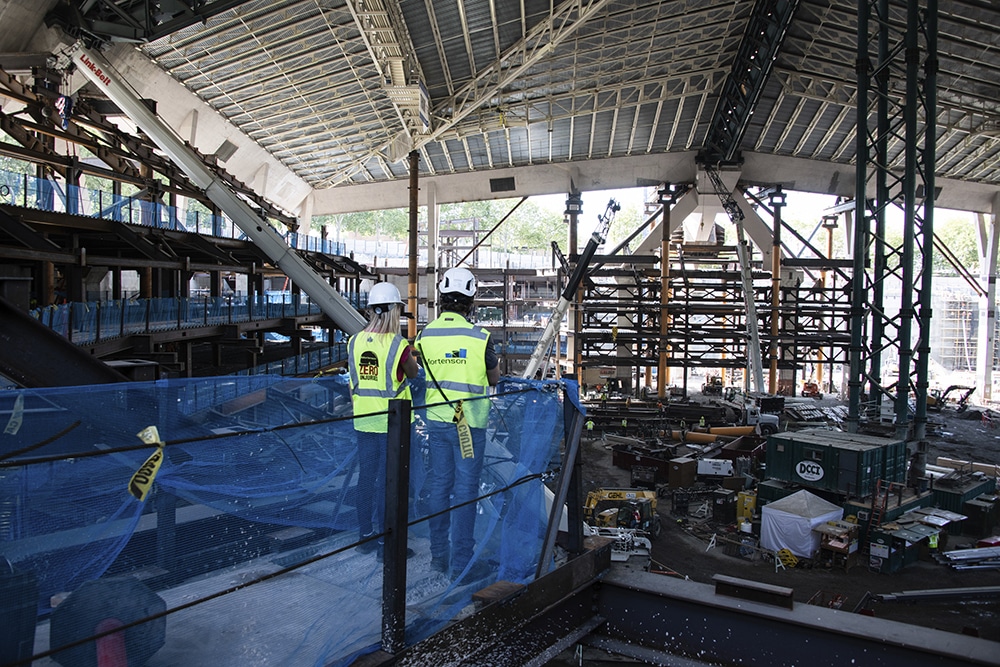
Construction
Before the Big Dig, Builders and Engineers Had to Execute the Big Lift
The tricky process of reconstructing Climate Pledge Arena while keeping the venue’s historic roof intact stands among the most challenging projects in the history of sports facility development in North America.
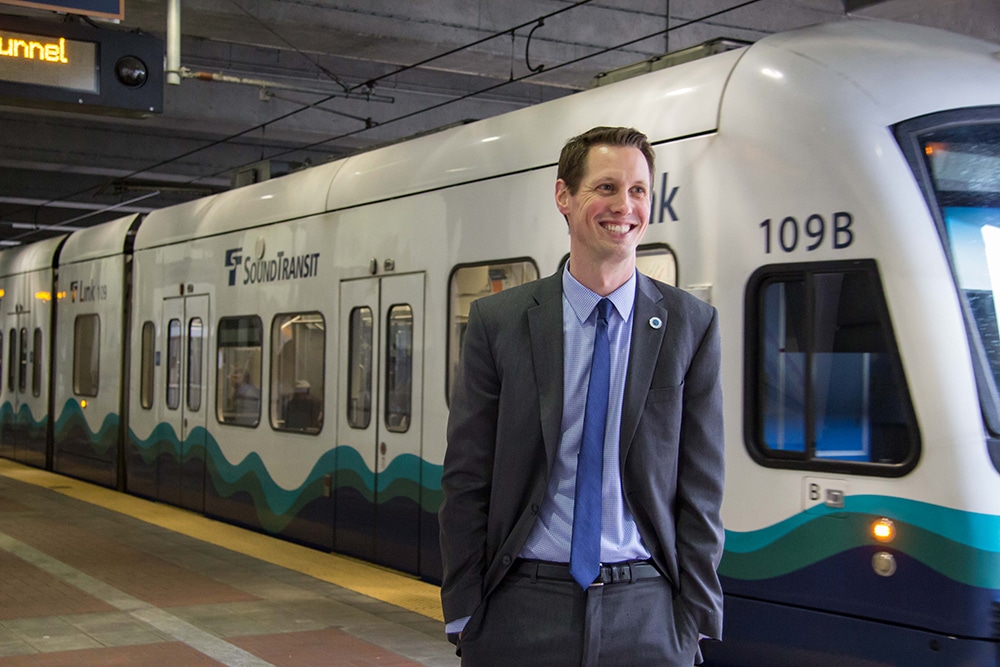
Sustainability
Transit Program Makes Arena Trips Easier on Fans, Environment
Rob Johnson has immersed himself in the massive effort to develop the first certified carbon-neutral big league venue.
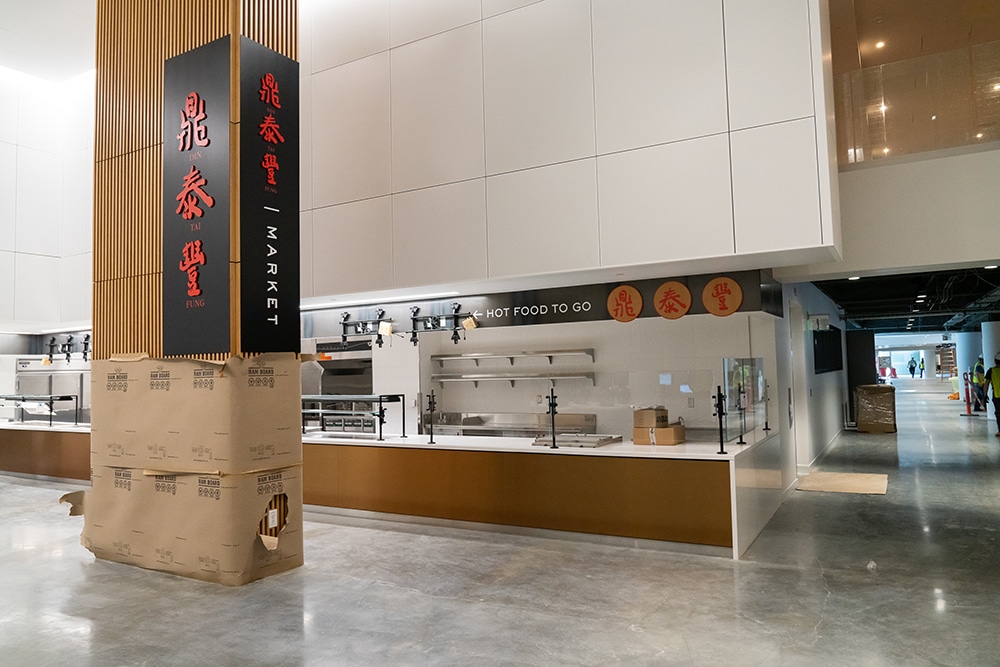
Food and Drink
Moving the Cooking Forward and Making the Service Faster
The move to a frictionless fan experience extends to all public spaces at Climate Pledge Arena, the first big league venue designed without traditional “belly-up” concession stands.
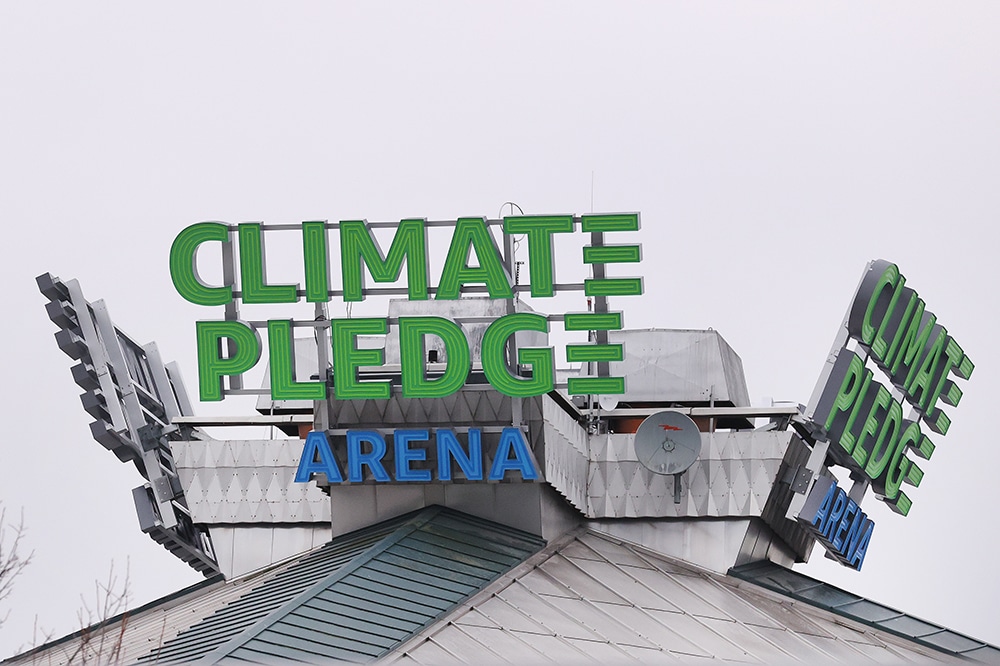
Sponsorships
Naming Rights Holders
for Kraken’s Facilities Keep Their Brands in the Background in Unusual Deals
Two of the biggest sponsors tied to the Seattle Kraken will not have their company’s name attached to the assets they bought, an anomaly in the world of sports marketing.

Sports RetaiL
A Firm New to Major League Team Deals Is Ready To Ride the Seattle Kraken Wave
Timing is everything for Bensussen Deutsch & Associates, the Seattle Kraken’s merchandise provider at Climate Pledge Arena.

Concert Retail
A Music Merch Veteran Thinks Additional Space Will Help Drive Per Caps Even Higher
Climate Pledge Arena was designed as much for concerts as sports. It’s a key piece of the revenue equation for developer and arena operator Oak View Group, which made the decision to run merchandise in-house for the 80 shows projected annually.
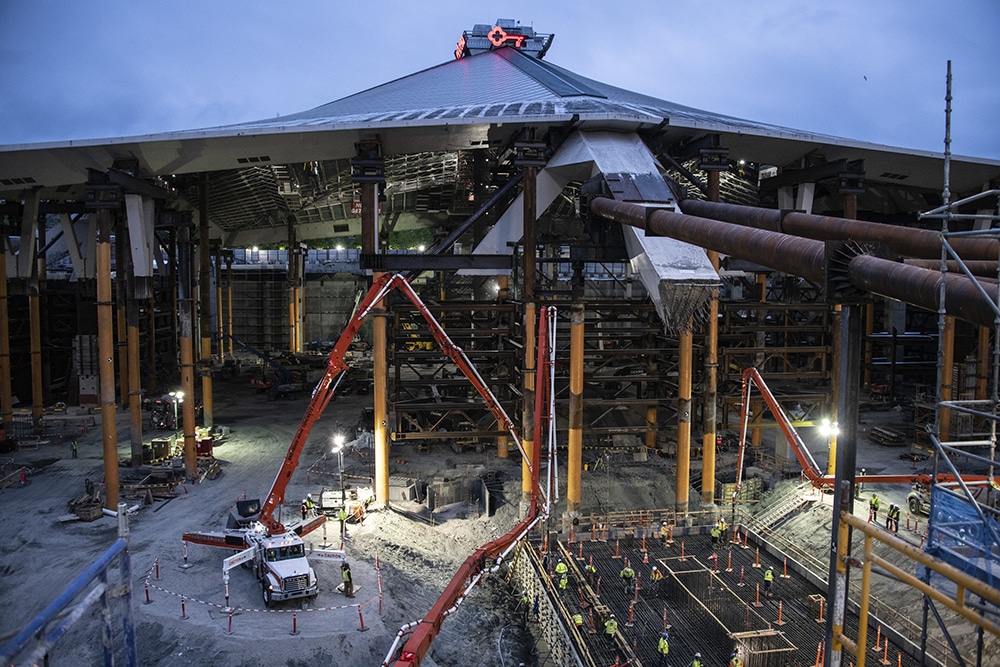
Preservation
Why an Iconic Roof Designed for the 1962 World’s Fair Tops the NHL’s Newest Arena
The signature roof and the exterior glass provide key historical elements in the new Climate Pledge Arena, but retaining them as part of the building’s construction wasn’t easy.

Health and Safety
Vaccination Verification Program Will Be Rolled Into Clear’s Health Pass
Oak View Group has selected Clear’s Health Pass system to incorporate the vaccination verification program at Climate Pledge Arena.
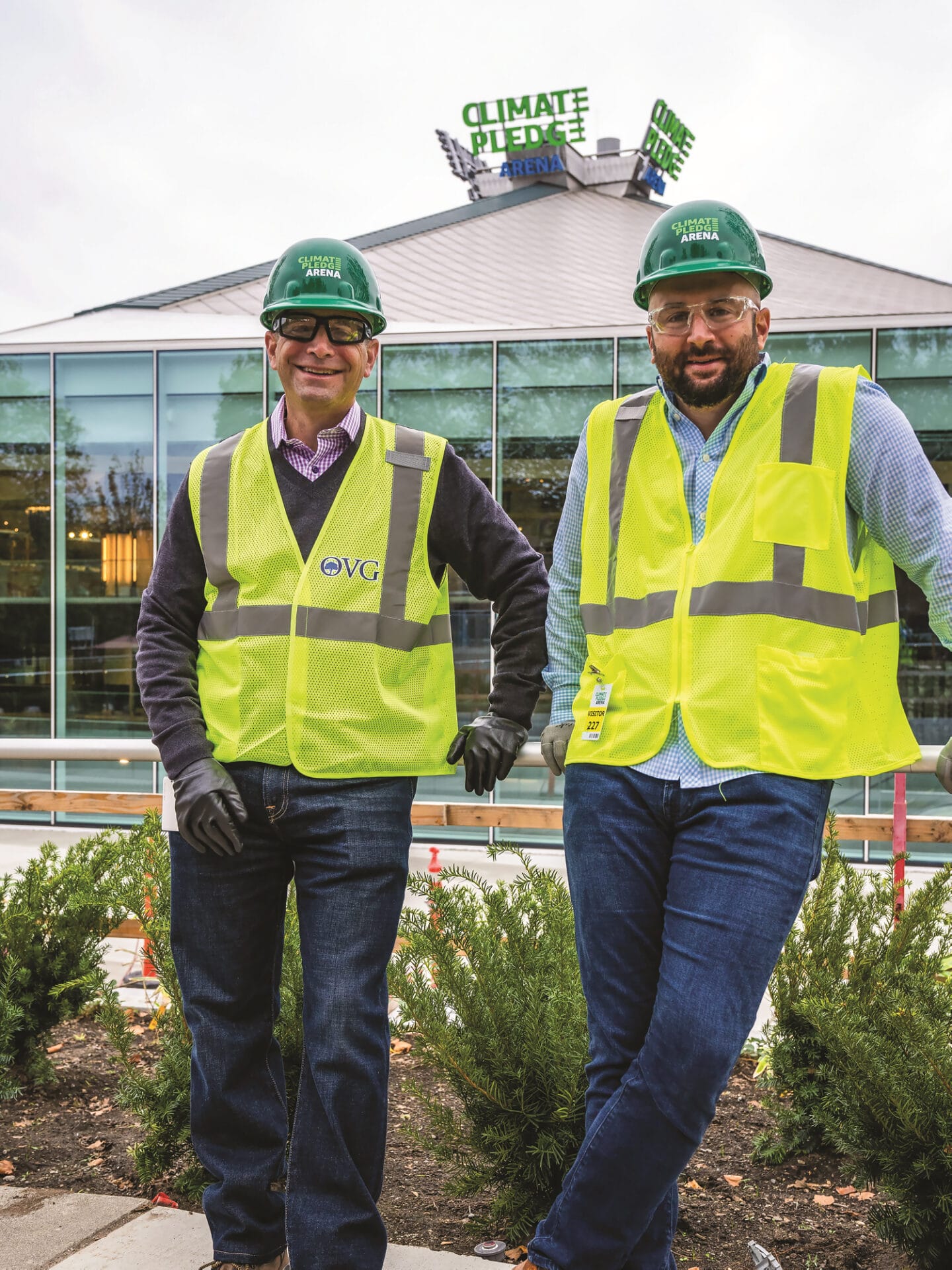
Q’s With Climate Pledge Arena SVP of Programming Eric Bresler and VP of Programming Nick Vaerewyck
A few days before Climate Pledge Arena’s grand opening Oct. 22, which will feature a Coldplay concert that will be livestreamed across the globe, Pollstar caught up with Eric Bresler, Climate Pledge Arena’s SVP of programming, and Nick Vaerewyck, VP of programming, to find out more about the arena and its programming.
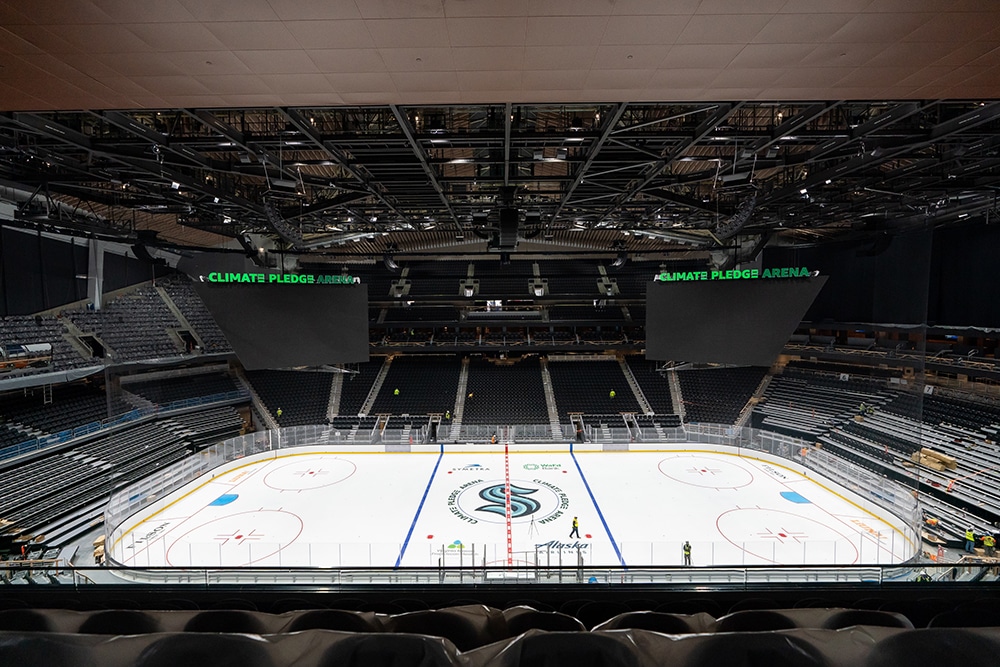
How Climate Pledge Arena Will Go From Coldplay to Kraken in 12 Hours
Roughly 12 hours after Coldplay’s final notes echo through the new Climate Pledge Arena at Seattle Center, the NHL’s newest team, the Seattle Kraken, will need to hit the ice for a morning skate before the team’s home debut that evening.
Four years after they last toured, Coldplay is preparing to hit the road again, first with a headlining performance at the grand opening of Seattle’s Climate Pledge Arena and then a slew of global stadium dates in 2022 that will redefine the possibilities of sustainable touring.
Q’s With Climate Pledge Arena VP of Marketing Rosie Selle: ‘We Strive to Do Things Differently’
Creating a world-class arena and NHL hockey operation from scratch is no small feat, but people like Rosie Selle, VP of marketing at Seattle’s Climate Pledge Arena, have the experience and attitude to do just that.
